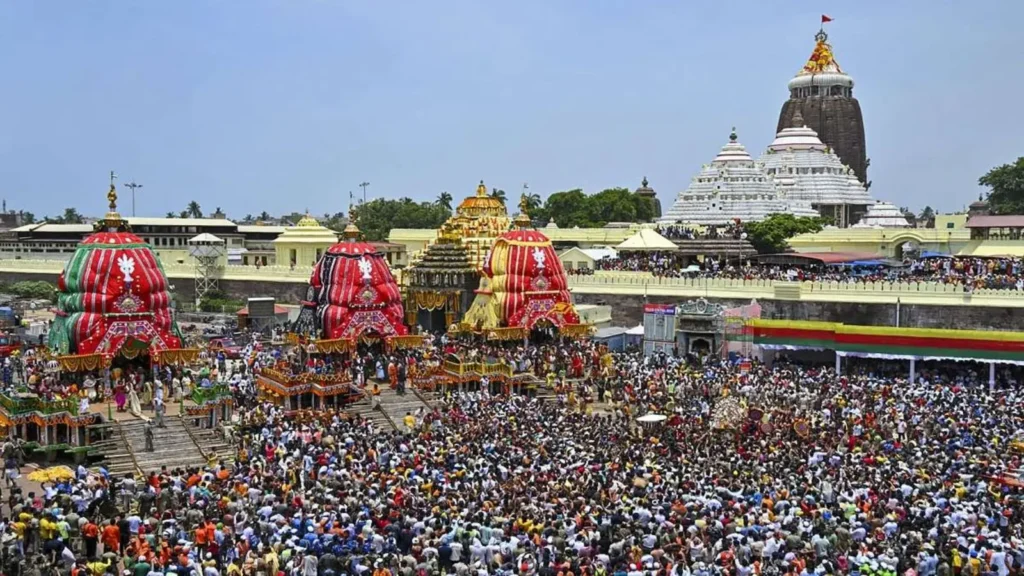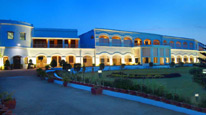The Puri Jagannath Temple, nestled in the coastal city of Puri in Odisha, India, stands as a beacon of spirituality, culture, and architectural splendor. Revered by millions, this temple is not just a religious site but a living testament to India’s rich heritage and traditions. In this blog, we delve into what makes the Puri Jagannath Temple truly special.
A Historical Marvel
Ancient Origins
The Puri Jagannath Temple has a history that spans over a millennium. Believed to have been established in the 12th century by King Anantavarman Chodaganga Deva of the Eastern Ganga dynasty, the temple has been a focal point of Vaishnavism, a major tradition within Hinduism. Its enduring presence through various dynasties and empires underscores its significance and the devotion it inspires.
Legends and Lore
The temple’s origin is steeped in mythology. According to legend, the deities Jagannath (a form of Lord Vishnu), Balabhadra, and Subhadra were established by King Indradyumna, a devout follower of Lord Vishnu. The lore surrounding their mysterious origin and the temple’s founding adds a layer of divine mystique that continues to attract devotees and visitors alike.
Architectural Grandeur
Dravidian Style
The Puri Jagannath Temple is a splendid example of Kalinga architecture, a subset of Dravidian architecture. Its towering spires, intricately carved exteriors, and vast courtyards showcase the artistic brilliance of ancient Indian craftsmen. The temple complex spans over 100 acres, making it one of the largest temple complexes in India.
The Majestic Jagamohana
One of the standout features is the Jagamohana, the assembly hall dedicated to Lord Jagannath. Its ornate façade, adorned with detailed carvings of gods, goddesses, and mythical creatures, is a masterpiece of temple architecture. The grandeur of the Jagamohana reflects the temple’s importance as a center of worship and community gathering.
Spiritual Significance
The Divine Deities
At the heart of the temple are the deities of Jagannath, Balabhadra, and Subhadra. These wooden idols are unique in their design and are believed to represent the universal form of Lord Vishnu. The deities undergo daily rituals and annual transformations, symbolizing the cyclical nature of life and the divine presence in the mundane.
The Rath Yatra
One of the most spectacular events associated with the Puri Jagannath Temple is the Rath Yatra, or the Chariot Festival. During this grand procession, the deities are placed on beautifully decorated chariots and pulled through the streets of Puri by thousands of devotees. This festival not only symbolizes the journey of the divine but also reinforces the bond between the gods and their followers.
Cultural Hub
Pilgrimage Destination
Puri is one of the Char Dham pilgrimage sites, making the Jagannath Temple a vital destination for Hindu pilgrims. The temple attracts millions of visitors annually, each seeking spiritual solace and blessings. The influx of pilgrims during festivals and regular days alike contributes to the city’s vibrant cultural tapestry.
Influence on Art and Literature
The temple has been a muse for countless artists, poets, and writers throughout history. Its rituals, festivals, and the very essence of Jagannath worship have inspired a plethora of cultural expressions, from classical dance and music to contemporary art forms. This cultural influence underscores the temple’s role as more than just a place of worship but as a cradle of artistic and literary creativity.
Unique Rituals and Traditions
The Anavasara Period
Anavasara is a unique ritual observed at the Puri Jagannath Temple, where the deities are in a period of rest after the annual bathing ceremony. During this time, the deities are believed to be sick, and special protocols are followed to ensure their comfort. This ritual exemplifies the deep humanization of the divine, fostering a personal connection between the deities and the devotees.
The Snana Yatra
Another significant ritual is the Snana Yatra, the grand bathing ceremony of the deities. This event marks the beginning of the festive season and is celebrated with great enthusiasm. The elaborate preparations, the ceremonial bath, and the subsequent celebrations highlight the temple’s role in preserving and perpetuating ancient traditions.
Preservation and Modern Challenges
Conservation Efforts
Maintaining the sanctity and structural integrity of the Puri Jagannath Temple is an ongoing challenge. Efforts by both the government and local communities focus on preserving its architectural beauty, managing the massive crowds, and ensuring that the temple’s spiritual essence remains untouched amidst modernization.
Balancing Tradition and Modernity
As the world rapidly changes, the Puri Jagannath Temple faces the task of balancing tradition with the needs of a modern society. Initiatives to improve infrastructure, enhance visitor experience, and promote sustainable tourism are crucial in ensuring that the temple continues to thrive while preserving its timeless legacy.
The Puri Jagannath Temple is a remarkable confluence of history, spirituality, art, and culture. Its architectural magnificence, rich traditions, and unwavering significance in the lives of millions make it a truly special landmark. Whether you are a devout pilgrim, an architecture enthusiast, or a curious traveler, the Puri Jagannath Temple offers a profound and enriching experience that resonates with the soul.
After visiting the temple and give puja to the jagganath temple, you’ll need a cosy and comfortable place to relax. Chankya BNR – Luxury Hotels in Puri offers the perfect stay option for enjoying your perfect holiday with your family and loved ones.






